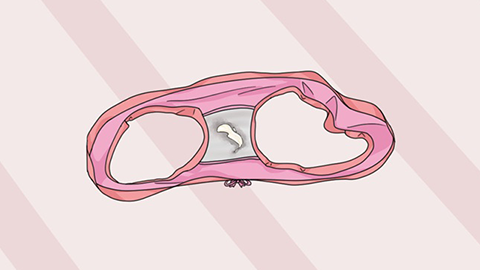What causes the vaginal discharge to become mostly transparent?
Generally, the main causes of transparent vaginal discharge include hormonal changes during ovulation, sexual arousal, fungal vaginitis, cervicitis, and salpingitis. If discomfort occurs, it is recommended to seek timely medical consultation and treatment at a regular hospital. Detailed explanations are as follows:
1. Hormonal Changes During Ovulation
Before ovulation, elevated estrogen levels stimulate the cervical glands to secrete more mucus, resulting in increased transparent, egg-white-like vaginal discharge. This is a normal physiological phenomenon that requires no special treatment. It is sufficient to change underwear frequently and maintain cleanliness and dryness of the external genitalia.

2. Sexual Arousal
During sexual excitement, pelvic congestion increases secretion from the cervix and vaginal glands, leading to increased transparent vaginal discharge. This is a normal physiological response; washing the external genitalia with warm water after intercourse and maintaining local hygiene is recommended.
3. Fungal Vaginitis
Excessive proliferation of Candida in the vagina disrupts the vaginal microenvironment, causing increased vaginal discharge, sometimes transparent and viscous, often accompanied by itching. Antifungal medications such as clotrimazole suppositories, miconazole nitrate suppositories, or fluconazole capsules may be used under medical guidance to inhibit fungal growth and relieve symptoms.
4. Cervicitis
Infection or irritation of the cervix by pathogens can cause inflammation, leading to increased cervical gland secretion and transparent vaginal discharge, sometimes accompanied by lower back or abdominal discomfort. Under medical guidance, medications such as azithromycin dispersible tablets, doxycycline tablets, or Baofukang suppositories may be used to control inflammation and reduce secretions.
5. Salpingitis
Inflammation of the fallopian tubes caused by pathogenic invasion can lead to increased secretions due to inflammatory stimulation, which may appear as transparent vaginal discharge and may be accompanied by lower abdominal pain. Under medical guidance, medications such as cefixime dispersible tablets, metronidazole tablets, or levofloxacin hydrochloride capsules may be used to control infection and relieve inflammation. If an abscess forms, surgical treatment such as salpingostomy may be required.
In daily life, it is important to avoid excessive vaginal douching to prevent disruption of the vaginal microenvironment; change cotton underwear frequently and avoid wearing tight synthetic undergarments; maintain hygiene before and after sexual activity and avoid unclean sexual practices; and undergo regular gynecological examinations to detect and treat gynecological conditions promptly, thus maintaining reproductive health.







